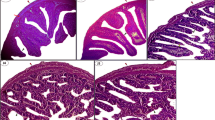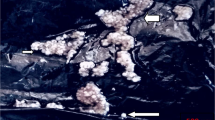Abstract
The present study aims to evaluate the hepatoprotective and antioxidant effects of Hibiscus sabdariffa extract on the carbon tetrachloride (CCl4)-induced hepatocyte damage in fish and provide evidence as to whether it can be potentially used as a medicine for liver diseases in aquaculture. H. sabdariffa extract (100, 200, and 400 μg/mL) was added to the carp primary hepatocyte culture before (pre-treatment), after (post-treatment), and both before and after (pre- and post-treatment) the incubation of the hepatocytes with CCl4. CCl4 at 8 mM in the culture medium produced significantly elevated levels of lactate dehydrogenase (LDH), glutamate oxalate transaminase (GOT), glutamate pyruvate transaminase (GPT), and malondialdehyde (MDA) and significantly reduced levels of superoxide dismutase (SOD) and glutathione peroxidase (GSH-Px). Pre-treatment and pre- and post-treatment of the hepatocytes with H. sabdariffa extract significantly reduced the elevated levels of LDH, GOT, GPT, and MDA and increased the reduced activities of SOD and GSH-Px in a dose-dependent manner; post-treatment did not show any protective effect. The results suggest that H. sabdariffa extract can be potentially used for preventing rather than curing liver diseases in fish.






Similar content being viewed by others
References
Brattin W. J.; Glende Jr. E. A.; Recknagel R. O. Pathological mechanisms in carbon tetrachloride hepatotoxicity. J. Free Radic. Biol. Med 1: 27–38; 1985.
Chewonarin T.; Kinouchi T.; Kataoka K.; Arimochi H.; Kuwahara T.; Vinitketkumnuen U.; Ohnishi Y. Effects of roselle (Hibiscus sabdariffa Linn.), a Thai medicinal plant, on the mutagenicity of various known mutagens in Salmonella typhimurium and on formation of aberrant crypt foci induced by the colon carcinogens azoxymethane and 2-amino-1-methyl-6-phenylimidazo[4,5-b]pyridine in F344 rats. Food. Chem. Toxicol 37: 591–601; 1999.
Dafallah A. A.; al-Mustafa Z. Investigation of the antiinflammatory activity of Acacia nilotica and Hibiscus sabdariffa. Am. J. Chinese Med. 24: 263–269; 1996.
Esterbauer H. Lipid peroxidation products: formation, chemical properties and biological activities. In: Cheeseman K. H.; Diazani M. U.; Slater T. F. (eds) Free radicals in liver injury. Churchill Livingstone, Edinburgh, pp 29–47; 1985.
Hu Y. Y.; Liu C. H.; Wang R. P.; Liu C.; Liu P.; Zhu D. Y. Protective actions of salvianolic acid A on hepatocyte injured by peroxidation in vitro. World J. Gastroenterol. 6: 402–404; 2000.
Koneri R.; Balaraman R.; Firdous; Vinoth Kumar M. Hepatoprotective effects of Momordica cymbalaria Fenzl. against carbon tetrachloride induced hepatic injury in rats. Pharmacologyonline 1: 365–374; 2008.
Lee C. Y.; Peng W. H.; Cheng H. Y.; Chen F. N.; Lai M. T.; Chui T. H. Hepatoprotective effect of Phyllanthus in Taiwan on acute liver damage induced by carbon tetrachloride. Am. J. Chinese Med. 34: 471–482; 2006.
Lee K. J.; Choi J. H.; Kim H. G.; Han E. H.; Hwang Y. P.; Lee Y. C.; Chung Y. C.; Jeong H. G. Protective effect of saponins derived from the roots of Platycodon grandiflorum against carbon tetrachloride induced hepatotoxicity in mice. Food Chem. Toxicol. 46: 1778–1785; 2008.
Liu J. Y.; Chen C. C.; Wang W. H.; Hsu J. D.; Yang M. Y.; Wang C. J. The protective effects of Hibiscus sabdariffa extract on CCl4-induced liver fibrosis in rats. Food Chem. Toxicol. 44: 336–343; 2006.
Myers M. S.; Landahl J. T.; Krahn M. M.; Johnson L. L.; McCain B. B. Overview of studies on liver carcinogenesis in English sole from Puget Sound; evidence for a xenobiotic chemical etiology I: pathology and epizootiology. Sci. Total Environ. 94: 33–50; 1990.
Myers M. S.; Landahl J. T.; Krahn M. M.; McCain B. B. Relationship between hepatic neoplasms and related lesions and exposure to toxic chemicals in marine fish from tire U.S. West Coast. Environ. Health Persp 90: 7–15; 1991.
Nimmo I. A. The glutathione S-transferases of fish. Fish Physiol. Biochem. 3: 163–172; 1987.
Part P.; Norrgren L.; Bergstrom E.; Sjoberg P. Primary cultures of epithelial cells from rainbow trout gills. J. Exp. Bio. 175: 219–232; 1993.
Pesonen M.; Goksoyr A.; Andersson T. Expression of P4501A1 in a primary culture of rainbow trout hepatocytes exposed to b-naphthoflavone or 2, 3, 7, 8-tetrochlorodibenzo-pdioxin. Arch. Biochem. Biophys. 292: 228–233; 1992.
Rechnagel R. O.; Glende Jr. E. A. Carbon tetrachloride hepatotoxicity: an example of lethal cleavage. CRC Crit. Rev. Toxicol 2: 263–297; 1973.
Sachdewa A.; Khemani L. D. Effect of Hibiscus rosa sinensis Linn. ethanol flower extract on blood glucose and lipid profile in streptozotocin induced diabetes in rats. J. Ethnopharmacol. 89: 61–66; 2003.
Shen X.; Tang Y.; Yang R.; Yu L.; Fang T.; Duan J. A. The protective effect of Zizyphus jujube fruit on carbon tetrachloride-induced hepatic injury in mice by anti-oxidative activities. J. Ethnopharmacol. 122: 555–60; 2009.
Situ Z. Q.; Wu J. Z. Cell culture. World Publishing House of Books, Beijing, China; 1996.
Smeets J. M. W.; Rankouhi T. R.; Nichols K. M.; Komen H.; Kaminski N. E.; Giesy J. P.; Berg M. In vitro vitellogenin production by carp (Cyprinus carpio) hepatocytes as a screening method for determining (anti) estrogenic activity of xenobiotics. Toxicol. Appl. Pharmacol. 157: 68–76; 1999.
Tseng T. H.; Kao E. S.; Chu C. Y.; Chou F. P.; Lin Wu H. W.; Wang C. J. Protective effects of dried flower extracts of Hibiscus sabdariffa L. against oxidative stress in rat primary hepatocytes. Food. Chem. Toxicol. 35: 1159–1164; 1997.
Tseng T. H.; Wang C. J.; Kao E. S.; Chu H. Y. Hibiscus protocatechuic acid protects against oxidative damage induced by tert-butylhydroperoxide in rat primary hepatocytes. Chem. Biol. Interact 101: 137–148; 1996.
Triebskorn R.; Casper H.; Heyd A.; Eikemper R.; Köhler H. R.; Schwaiger J. Toxic effects of the non-steroidal anti-inflammatory drug diclofenac, part II. Cytological effects in liver, kidney, gills and intestine of rainbow trout (Oncorhynchus mykiss). Aquat. Toxicol. 68: 151–166; 2004.
Wan X.; Ma T.; Wu W.; Wang Z. EROD activities in a primary cell culture of grass carp (Ctenopharyngodon idellus) hepatocytes exposed to polychlorinated aromatic hydrocarbonas. Ecotox. Environ. Safe. 58: 84–89; 2004.
Wang C.; Wang J.; Lin W.; Chu C.; Chou F.; Tseng T. Protective effect of hibiscus anthocyanins against tert-butyl hydroperoxide-induced hepatic toxicity in rats. Food Chem. Toxicol. 38: 411–416; 2000.
Wahabi H. A.; Alansary L. A.; Al-Sabban A. H.; Glasziuo P. The effectiveness of Hibiscus sabdariffa in the treatment of hypertension: a systematic review. Phytomedicine. 17: 83–86; 2010.
Winston G. W.; DiGiulio R. T. Prooxidant and antioxidant mechanisms in aquatic organisms. Aquat. Toxicol. 19: 137–161; 1991.
Winston G. W.; Moore M. N.; Kirchin M. A.; Soverchia C. Production of reactive oxygen species by hemocytesfrom the marine mussel. Mytilus edulis: lysosomal localization and effect of xenobiotics. Comp. Biochem. Phys. C 113: 221–229; 1996.
Acknowledgments
This study was funded by Ministry of Science and Technology of the People's Republic of China (2009DFA32620), co-funded by Department of Science and Technology of Jiangsu (BZ2008008), Wuxi Municipal Bureau on Science and Technology (CZE00906), and Central Public-Interest Scientific Institution Basal Research Fund (6-115009).
Conflict of interest
The authors declare that there are no conflicts of interest.
Author information
Authors and Affiliations
Corresponding author
Additional information
Editor: J. Denry Sato
Rights and permissions
About this article
Cite this article
Yin, G., Cao, L., Xu, P. et al. Hepatoprotective and antioxidant effects of Hibiscus sabdariffa extract against carbon tetrachloride-induced hepatocyte damage in Cyprinus carpio . In Vitro Cell.Dev.Biol.-Animal 47, 10–15 (2011). https://doi.org/10.1007/s11626-010-9359-2
Received:
Accepted:
Published:
Issue Date:
DOI: https://doi.org/10.1007/s11626-010-9359-2




